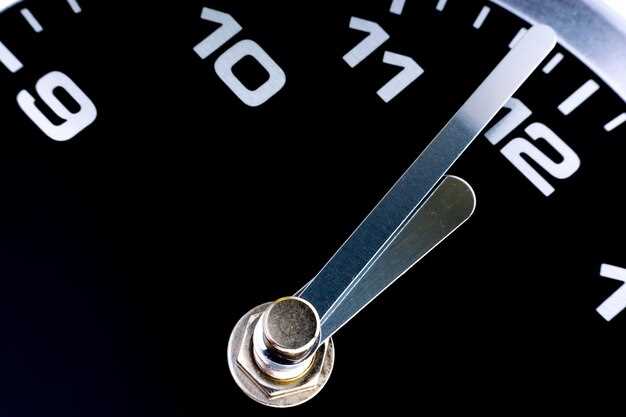
The quarter mile is a fundamental distance in the world of drag racing, representing a standard measure of performance and speed. This length, equivalent to 1,320 feet, has become the benchmark for evaluating the power and efficiency of vehicles in an environment that emphasizes acceleration. Enthusiasts and professionals alike flock to the drag strip, eager to test their machines and showcase their skills in this exhilarating format.
In drag racing, the quarter mile serves not only as a competition ground but also as a critical indicator of a vehicle’s capabilities. Achieving a fast time in the quarter mile requires a combination of engine power, traction, and driving expertise. As racers focus on optimizing their setups to enhance speed, they contribute to a greater understanding of automotive engineering and performance dynamics.
The significance of the quarter mile extends beyond just racing. It has influenced car design and technology, pushing manufacturers to innovate and improve their offerings. By analyzing quarter mile times, both consumers and engineers gain insights into a car’s acceleration potential, turning a simple measurement into an essential tool for automotive evaluation and comparison.
Key Components of a Quarter Mile Drag Race

A quarter mile drag race is a thrilling spectacle that showcases the raw power and speed of vehicles. Each race consists of several key components that contribute to its overall excitement and competitiveness. Understanding these elements is essential for both participants and spectators.
One of the primary components of a quarter mile drag race is the starting line, where drivers launch their vehicles with precision. The technique used for the launch can significantly affect the outcome of the race. Factors such as tire grip and engine power play crucial roles in determining how effectively a driver can accelerate off the line.
The drag strip itself is another essential aspect of the race. Typically measured at 1320 feet, or a quarter mile, this straight stretch of asphalt provides a flat surface for vehicles to reach their maximum speed. The strip is marked with various indicators, including the starting lights, which signal the beginning of the race.
The timing system is a critical component, as it records the elapsed time of each vehicle as they complete the quarter mile. This system uses electronic sensors and a scoreboard to display the results immediately, creating an engaging experience for fans and participants alike.
Another important factor in drag racing is the reaction time of the drivers. This is the time it takes from the moment the starting lights turn green to when the driver leaves the starting line. A fast reaction time can provide a significant advantage, often determining the winner in close races.
Finally, vehicles in quarter mile drag racing are often modified for performance. This includes upgrades to the engine, transmission, and suspension systems. Such enhancements allow cars to maximize their acceleration and top speed during the race, making it a test of engineering as much as it is of driving skill.
How to Prepare Your Vehicle for Optimal Performance
To achieve the best results on the drag strip, proper preparation of your vehicle is crucial. The quarter mile is a test of speed, power, and control, so every aspect must be fine-tuned for optimal performance.
1. Weight Reduction: The first step in preparing your vehicle is minimizing its weight. Remove any unnecessary items from the interior, including rear seats and spare tires. A lighter car accelerates faster and has better handling dynamics on the strip.
2. Tire Selection: Choosing the right tires can significantly impact traction and overall performance. Invest in high-quality drag radials for better grip during launches. Ensure they are properly inflated; the correct pressure is essential for maximizing contact with the strip.
3. Engine Tuning: Fine-tuning your engine is key to harnessing its full potential. This may involve adjusting the air-fuel mixture, ignition timing, and other parameters. Consider a performance tune if your vehicle is equipped with an aftermarket engine management system.
4. Suspension Setup: A well-tuned suspension optimizes weight transfer during acceleration. Stiffer springs and dampers can help minimize squat, enabling better traction off the line. Additionally, adjusting ride height may improve aerodynamics.
5. Brake System: The ability to stop efficiently is as crucial as acceleration. Upgrade your brake pads and fluid for improved performance. Lightweight components can also reduce overall weight, aiding in both acceleration and braking.
6. Fuel Quality: Using high-octane fuel can enhance engine performance. If your vehicle is designed for premium gas, never settle for lower grades. Proper fuel can help avoid knock and improve throttle response.
7. Practice and Preparation: Finally, nothing beats practice. Familiarize yourself with your vehicle’s capabilities by making test runs. This will allow you to understand how it behaves on the strip and make any necessary adjustments to your setup.
By following these guidelines, you can prepare your vehicle for optimal performance in the exciting and competitive world of drag racing. Reaching your best times in the quarter mile is attainable with careful planning and execution.
Analyzing Time Slips and Performance Metrics

Time slips are essential documents that provide a comprehensive analysis of a vehicle’s performance on the quarter mile strip. Each slip includes critical metrics such as elapsed time (ET), trap speed, reaction time, and several other performance indicators that can help drivers and enthusiasts understand their vehicle’s capabilities and areas for improvement.
Elapsed time (ET) is perhaps the most crucial metric recorded on a time slip. This value indicates how long it takes a vehicle to traverse the quarter mile from a standing start. Lower ETs signify better performance, making the quarter mile a benchmark in drag racing.
Trap speed is another vital measurement, representing the maximum speed attained by a vehicle as it crosses the finish line of the quarter mile strip. This figure can indicate a vehicle’s overall power and aerodynamics, providing insight into its potential for higher speeds in future races.
Reaction time, recorded from the moment the light turns green until the car launches, is critical for success in drag racing. A quick reaction can significantly influence the overall time and outcome of a race, making it an essential factor for competitors. Analyzing reaction times in conjunction with ETs enables racers to gauge their launching performance and refine their techniques.
Furthermore, a detailed examination of time slips reveals patterns and trends for optimization. Multiple runs allow drivers to compare different setups, tires, or driving techniques. By systematically adjusting these variables, racers can improve their overall performance on the quarter mile while understanding the impact of specific changes.
In conclusion, analyzing time slips and performance metrics is vital for any racer aiming to excel in the competitive world of quarter mile drag racing. The insights gained from these analyses not only enhance racing strategies but also contribute to the ongoing pursuit of automotive excellence.



